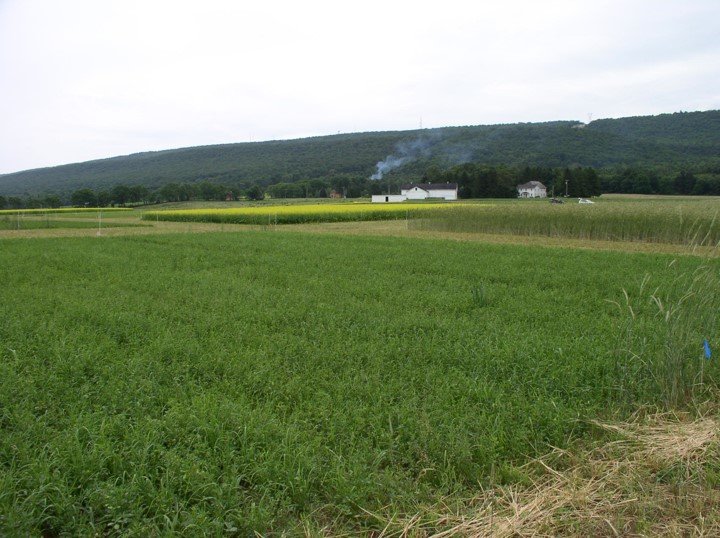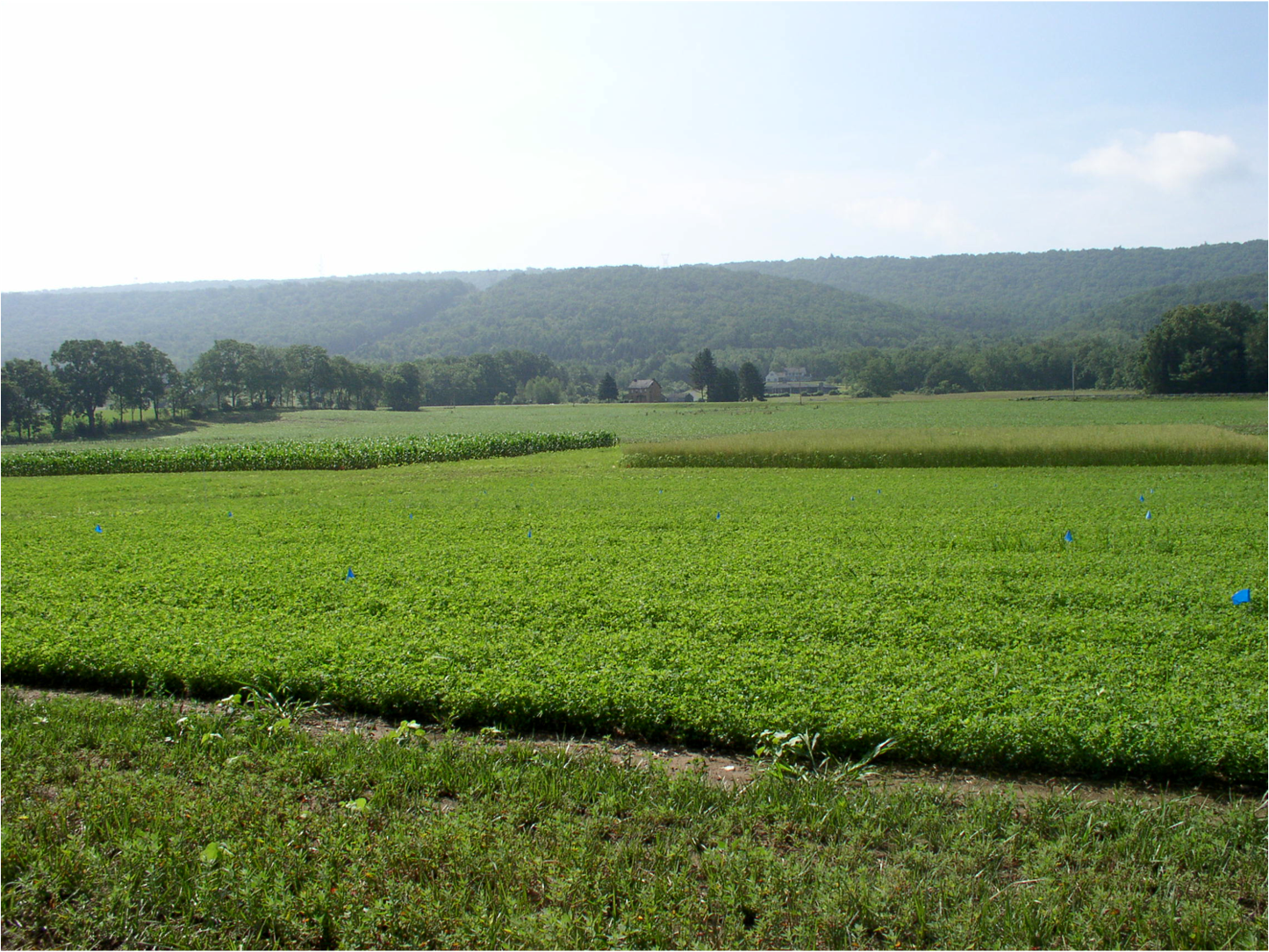Pennsylvania Dairy Cropping Systems Trial
The Dairy Cropping Systems Project was established in 2010 at Pennsylvania State University’s Agronomy Research Farm by an interdisciplinary team of Pennsylvania State University and United States Department of Agriculture Agricultural Research Service (USDA-ARS) researchers and educators. The objective of the project is to evaluate cropping system strategies that can produce the forage, feed and fuel for an average-sized dairy farm in Pennsylvania. In addition, project goals were to identify strategies for no-till dairy farming systems that reduce nutrient and soil loss and reduce pesticide and herbicide inputs but are comparably productive and profitable as the typical dairy farms in the Pennsylvania and northeastern region. The farm included two diverse six-year crop rotations with perennial legumes, cover and green manure crops, and winter canola that was replaced with winter annual small grains grown for forage starting in 2016/2018. Within each crop rotation two management practices for no-till crop production were compared: 1. Manure rotation (earlier called the Forage rotation) compared injected manure (IM) to broadcast manure (BM); 2. Pest Rotation (earlier labeled the Grain rotation) compared a combination of weed management strategies designed to reduce herbicide (RH) use relative to a "standard" herbicide (SH) weed management program. Both rotations were managed with integrated weed management. This project also engages a dairy nutrition and production model that predicts the performance of a virtual dairy herd from the crop yield and quality results. In addition, there is a control corn soybean rotation managed with standard herbicides and preemptive pesticides.
The project was funded by NESARE USDA from 2010 until 2019. In 2018, the project treatments were modified and funding transitioned to the USDA-ARS Long-Term Agricultural Research Network funding.
Producer relevance
The experiment represents dairy forage, grain-forage, and mixed crop-animal production systems. The majority of producers in the area would not employ the simplest crop rotation (control). Innovative producers in the area would employ the most complex crop rotation.
Expected benefits
Experimental treatments were selected to be Agroecological, Carbon-building, Cost-effective, Use fewer external inputs, No-tillage, Regenerative, Soil health-building,
Local stressors
The expected climate change-related stressors in the area are: Droughts, Heat, Extreme precipitation events, Seasonal temperature changes, Shifting snowfall patterns.

An aerial view of the experimental plots. Photo by Robb Klassen.

View from a maize field.

Mixed perennial forage.

Alfalfa in front of maize and small grain plots.